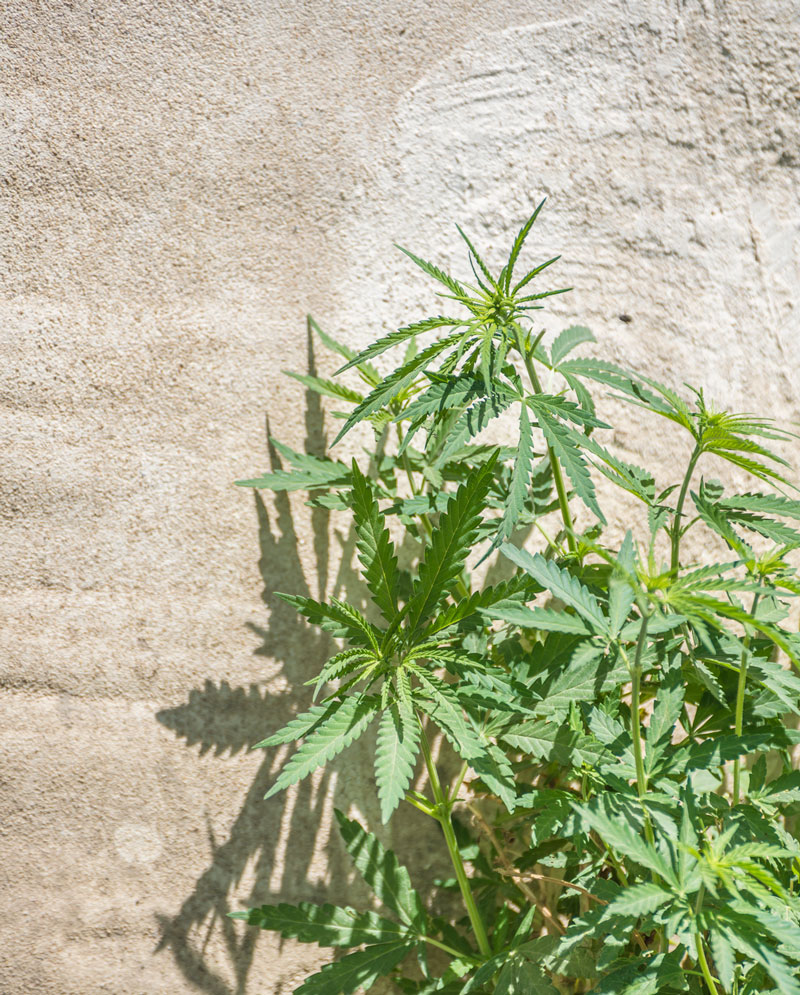Making history with hemp
RAPID CITY-Back in the early 1900’s the agricultural industry in South Dakota got a new and very valuable partner in the Aby’s Feed and Seed grain elevator. Built in 1911, it was situated close to the railroad tracks in order to make loading and unloading convenient for farmers across the region. It was a historic moment in the industry, and in Rapid City – and today the building is making history again.
From June 14th through the 20th, the crew constructing the build-out of the soon-to-be Seed Studios at Aby’s, has been hard at work installing walls – made of Hempcrete – for the band practice and recording studios.
The project is the culmination of a dream long pursued by owner Jeremy Briggs and his team. From his early days touting the myriad benefits of hemp through the locally popular Hemp Hoe Down event, Briggs has been working alongside others to bring the resource to its full usefulness for more than 20 years. The success of the Hemp Hoe Down event also financed another history-making event.
That milestone came in 2008 when he and a team of dedicated friends constructed the first hemp installation in America— a hemp house— near Kiza Park on the Pine Ridge Reservation. So he knew when he began the project at Aby’s it was the perfect building material for the space for so many reasons.
Hempcrete consists of mixing shredded hemp hurd with water and lime, and then dumping the mix into the space between wall studs. It is gently tamped down to fill the space provided by the outer supports – in this case, plywood attached to the outside of the studs – and after about 10 minutes the product is sufficiently dried into its final shape. The plywood is removed and moved up the studs and the process starts again. Working with the material doesn’t take any special equipment or training, just a team of people that can work quickly together.
The material will continue to cure over the next 6 weeks, and the final result is naturally pest and mold resistant, flexible enough to use in earthquake zones, and perfect insulation-both thermally, and acoustically. Which is one of the reasons Briggs sought it out. Not only does Hempcrete lower utility costs by keeping the interior cool in the summer and warm in the winter, it is also a non-toxic option for soundproofing – perfect for Aby’s. “Traditional soundproofing material is petroleum by-product-based, and therefore both toxic and flammable,” Cameron McIntosh of Ameri Chanvre points out. “Not only is the hempcretet non-toxic, it’s also fire resistant. That’s especially important when you have people closed in a small space with equipment that can get warm.” McIntosh has been consulting on the project with Briggs and actively building alongside the team.
So has Matt Merino of Homeland Hempcrete in Bismarck, ND. His company is in the design and testing phase to explore alternatives to the lime used in Hempcrete, mentioning “It’s the most expensive and least eco-friendly part of the material.” Though lime is used in traditional portland cement, concrete in not a good option for walls, or for soundproofing, and above all, Briggs wanted his spaces to be as healthy and environmentally friendly as possible. “Hemp is easy to grow, requires less water, grows without the use of toxic chemicals, and sequesters carbon- because carbon from the air is literally built in the wall. Unfortunately, however, it has to be shipped to the US.
American Lime Tech supplied the lime for both the 2008 and the 2021 project. The hemp itself, however had to be imported from Europe and France respectively, “For crying out loud,” Briggs laments. He would prefer to source the product locally, and to that end, has been working with “the godfather of hemp”, Alex White Plume and his White Plume Hemp Company on Pine Ridge to one day grow and process hemp right here in South Dakota. That’s the next phase of the big hemp dream.
The post Making history with hemp first appeared on Native Sun News Today.

